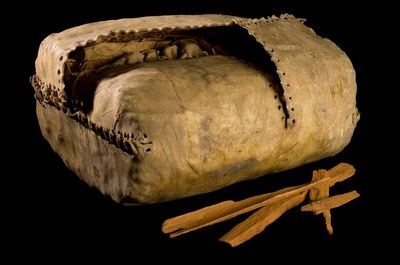Bag for storing cinchona bark, Peru, 1777–1785
erstellt von
—
last modified
2022-10-13T16:38:33+02:00
Science Museum, London, CC BY 4.0
Science Museum, London, CC BY 4.0
Bag for cinchona bark, Peru, 1777–1785, unknown manufacturer, unknown photographer; source: Science Museum, London, https://wellcomecollection.org/works/hgn3gd24, Creative Commons Attribution (CC BY 4.0), https://creativecommons.org/licenses/by/4.0.
Economic Migration in Early Modern Europe@Economic Migration Early Modern Europe@(ÜB)@freigabe
Global health in the colonial era: The expansion of European medicine@Global Health@(BE)@freigabe
Mission, colonialism, and changing values@Mission, colonialism, and changing values@(BE)@freigabe


 Creative Commons Attribution 4.0 International (
Creative Commons Attribution 4.0 International (